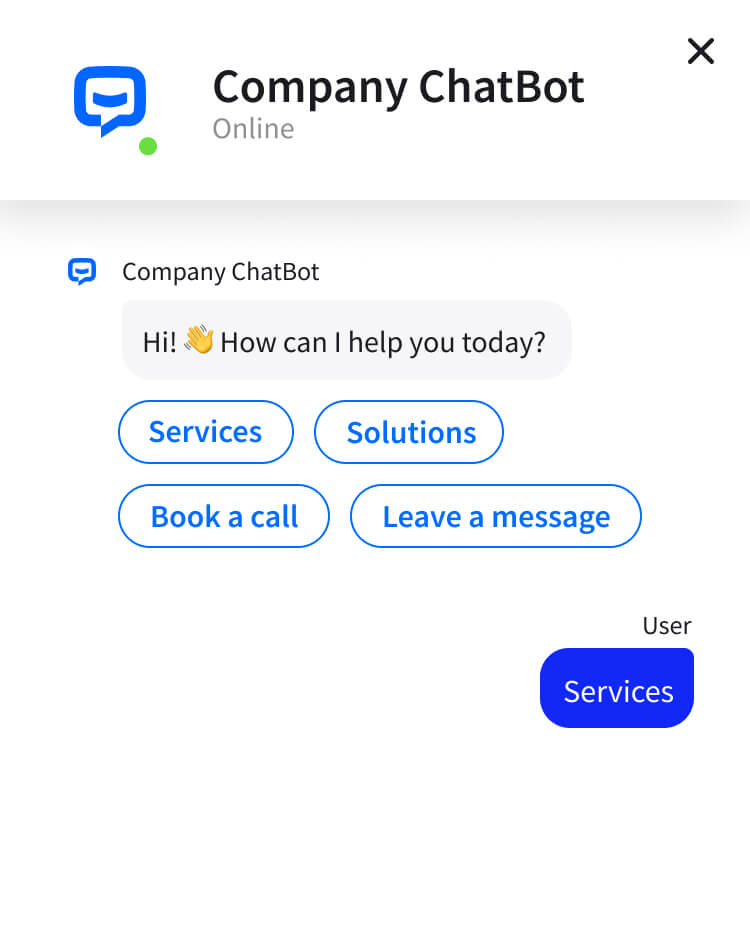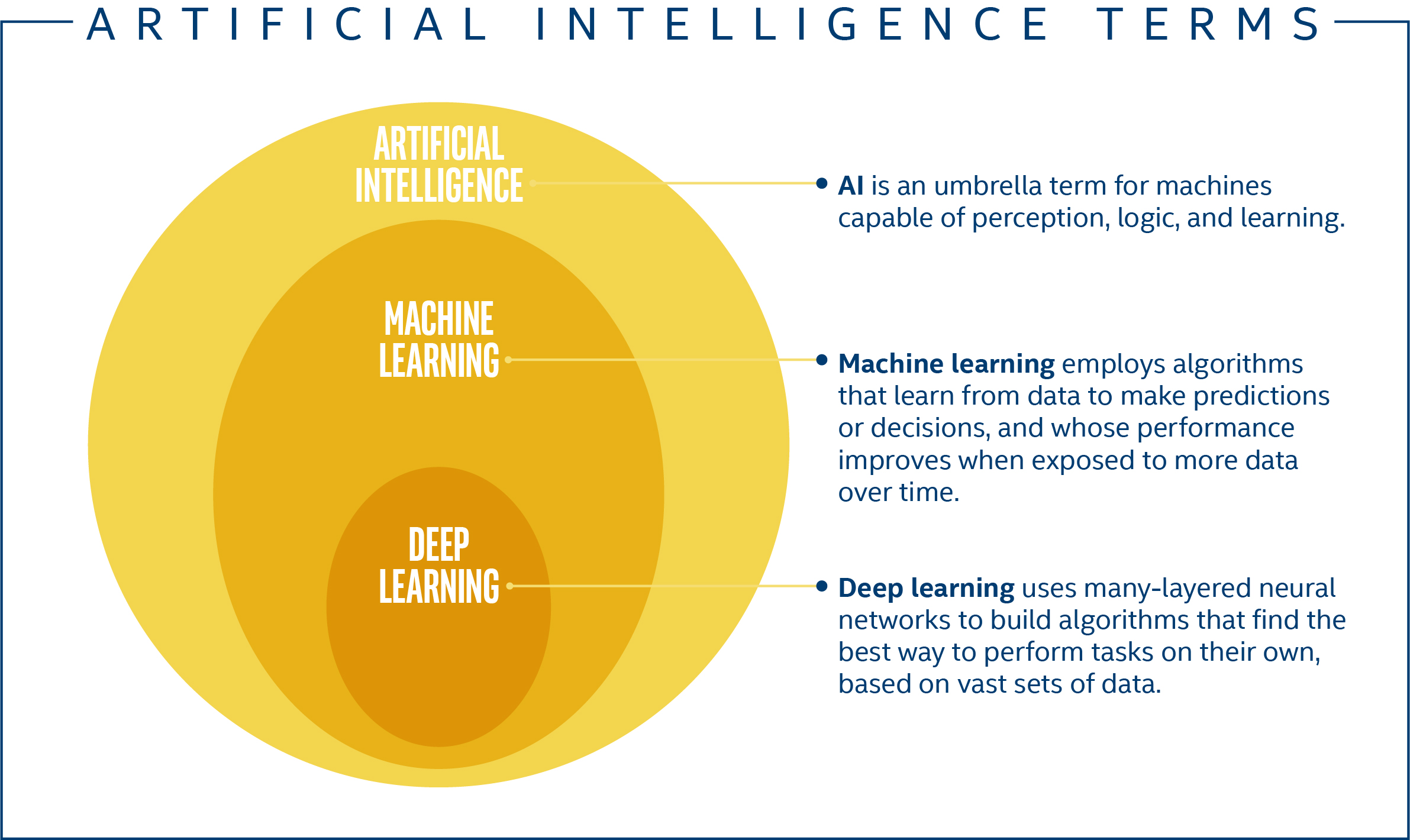
This introduction to machine learning will provide an overview of basic concepts and techniques of machine learning. We will be discussing some of the most important applications of machine-learning such as image recognition and reinforcement learning. We will also be discussing the different types and uses of neural networks. The next section will cover deep learning and how to use neural networks. After reading this article, you should be well-prepared to start your own machine learning project.
Deep learning can be considered a subset or machine learning.
Machine learning is the process by which an algorithm is created and trained to perform tasks using data. Deep learning, an advanced type of machine learning, uses multiple layers of algorithms rather than the three standard ones. Deep learning algorithms can be more complex than those used in machine learning. They mimic the way that the human brain processes data, recognizes patterns, and is therefore more difficult than other forms of machine learning. This technology has many uses, from speech recognition and image classification. Here are some ways it can help.

Unsupervised learning includes reinforcement learning.
This technique involves putting an agent into an environment with defined parameters. They define positive and negative activities and an overarching goal. It is similar to supervised learning in that developers must program the parameters. These include the desired goal, rewards, and punishments. After this, the algorithm can run by itself. Sometimes reinforcement learning is referred to by the terms "unsupervised" and "semisupervised" learning.
Neural network are a form of neural networks
Artificial neural network mimics the human brain's way of processing information. For example, when recognizing handwriting, the human brain can make decisions quickly. It might ask questions about facial recognition based on its characteristics. Neural networks work in the same way and can be used to help you make decisions even without context. These are popular ways to train neural networks artificially for machine learning applications.
Machine learning is well-known for its image recognition.
One example of machine-learning application is image recognition. If a computer is programmed to recognize chairs, it can identify a chair in a photograph. Thousands of photos are tagged with the term "chair," and these images are analyzed by the machine. The patterns of pixels can be used to identify the chair in a photograph. It can also recognize images from other categories such as images of cars and flowers.
Unsupervised learning is a subset that includes neural networks.
The underlying idea behind unsupervised machine-learning is to build a model to predict future results. This model is composed of weights that try to model the relationship between input and ground-truth labels. As the neural network learns how to recognize different data sets, it adapts its parameters. This model is always changing. The most basic type of neural network architecture is a feedforward one, where input is fed into a network and coefficients map the input into guesses at the end.

Bayesian methods are one subset of supervised Learning
Bayesian methods are one subset of machinelearning. They are most commonly used in applications that have a complex, noisy, or computationally expensive objective function. Bayesian uses a probability method to evaluate candidate sample. The objective function then is compared against the candidate sample, which are often data. Bayesian optimization is popular in this setting. Bayesian methods can also be used in supervised learning. In this case, the objective function is modelled in terms of a prior distributive.
FAQ
What does AI mean for the workplace?
It will change how we work. We'll be able to automate repetitive jobs and free employees to focus on higher-value activities.
It will improve customer services and enable businesses to deliver better products.
It will enable us to forecast future trends and identify opportunities.
It will give organizations a competitive edge over their competition.
Companies that fail AI will suffer.
Why is AI used?
Artificial intelligence (computer science) is the study of artificial behavior. It can be used in practical applications such a robotics, natural languages processing, game-playing, and other areas of computer science.
AI is also referred to as machine learning, which is the study of how machines learn without explicitly programmed rules.
AI is being used for two main reasons:
-
To make our lives easier.
-
To be able to do things better than ourselves.
Self-driving vehicles are a great example. AI can do the driving for you. We no longer need to hire someone to drive us around.
Who invented AI and why?
Alan Turing
Turing was first born in 1912. His father was clergyman and his mom was a nurse. He was an exceptional student of mathematics, but he felt depressed after being denied by Cambridge University. He took up chess and won several tournaments. He returned to Britain in 1945 and worked at Bletchley Park's secret code-breaking centre Bletchley Park. Here he discovered German codes.
1954 was his death.
John McCarthy
McCarthy was born on January 28, 1928. He was a Princeton University mathematician before joining MIT. He developed the LISP programming language. He had laid the foundations to modern AI by 1957.
He died on November 11, 2011.
What countries are the leaders in AI today?
China leads the global Artificial Intelligence market with more than $2 billion in revenue generated in 2018. China's AI industry is led in part by Baidu, Tencent Holdings Ltd. and Tencent Holdings Ltd. as well as Huawei Technologies Co. Ltd. and Xiaomi Technology Inc.
China's government is heavily involved in the development and deployment of AI. The Chinese government has established several research centres to enhance AI capabilities. These include the National Laboratory of Pattern Recognition, the State Key Lab of Virtual Reality Technology and Systems, and the State Key Laboratory of Software Development Environment.
China also hosts some of the most important companies worldwide, including Tencent, Baidu and Tencent. These companies are all actively developing their own AI solutions.
India is another country where significant progress has been made in the development of AI technology and related technologies. India's government is currently focusing its efforts on developing a robust AI ecosystem.
How will governments regulate AI?
Although AI is already being regulated by governments, there are still many things that they can do to improve their regulation. They need to make sure that people control how their data is used. And they need to ensure that companies don't abuse this power by using AI for unethical purposes.
They must also ensure that there is no unfair competition between types of businesses. Small business owners who want to use AI for their business should be allowed to do this without restrictions from large companies.
What are the benefits of AI?
Artificial intelligence is a technology that has the potential to revolutionize how we live our daily lives. Artificial Intelligence has revolutionized healthcare and finance. It's also predicted to have profound impact on education and government services by 2020.
AI is already being used in solving problems in areas like medicine, transportation and energy as well as security and manufacturing. The possibilities for AI applications will only increase as there are more of them.
So what exactly makes it so special? It learns. Computers can learn, and they don't need any training. Instead of teaching them, they simply observe patterns in the world and then apply those learned skills when needed.
This ability to learn quickly is what sets AI apart from other software. Computers can scan millions of pages per second. They can quickly translate languages and recognize faces.
Because AI doesn't need human intervention, it can perform tasks faster than humans. It can even surpass us in certain situations.
Researchers created the chatbot Eugene Goostman in 2017. This bot tricked numerous people into thinking that it was Vladimir Putin.
This proves that AI can be convincing. Another benefit of AI is its ability to adapt. It can be trained to perform new tasks easily and efficiently.
This means that companies do not have to spend a lot of money on IT infrastructure or employ large numbers of people.
Statistics
- According to the company's website, more than 800 financial firms use AlphaSense, including some Fortune 500 corporations. (builtin.com)
- More than 70 percent of users claim they book trips on their phones, review travel tips, and research local landmarks and restaurants. (builtin.com)
- Additionally, keeping in mind the current crisis, the AI is designed in a manner where it reduces the carbon footprint by 20-40%. (analyticsinsight.net)
- The company's AI team trained an image recognition model to 85 percent accuracy using billions of public Instagram photos tagged with hashtags. (builtin.com)
- While all of it is still what seems like a far way off, the future of this technology presents a Catch-22, able to solve the world's problems and likely to power all the A.I. systems on earth, but also incredibly dangerous in the wrong hands. (forbes.com)
External Links
How To
How to Setup Google Home
Google Home is a digital assistant powered by artificial intelligence. It uses sophisticated algorithms, natural language processing, and artificial intelligence to answer questions and perform tasks like controlling smart home devices, playing music and making phone calls. Google Assistant can do all of this: set reminders, search the web and create timers.
Google Home works seamlessly with Android phones or iPhones. It allows you to access your Google Account directly from your mobile device. Connecting an iPhone or iPad to Google Home over WiFi will allow you to take advantage features such as Apple Pay, Siri Shortcuts, third-party applications, and other Google Home features.
Google Home is like every other Google product. It comes with many useful functions. It will also learn your routines, and it will remember what to do. It doesn't need to be told how to change the temperature, turn on lights, or play music when you wake up. Instead, you can just say "Hey Google", and tell it what you want done.
To set up Google Home, follow these steps:
-
Turn on Google Home.
-
Hold the Action Button on top of Google Home.
-
The Setup Wizard appears.
-
Continue
-
Enter your email address.
-
Choose Sign In
-
Your Google Home is now ready to be